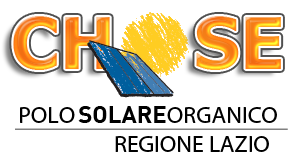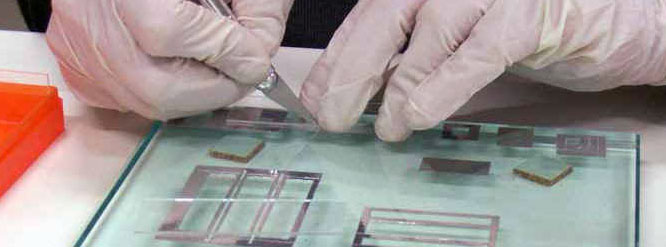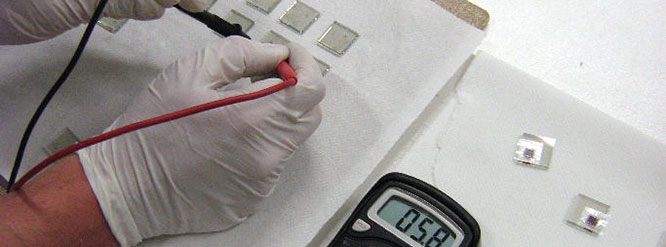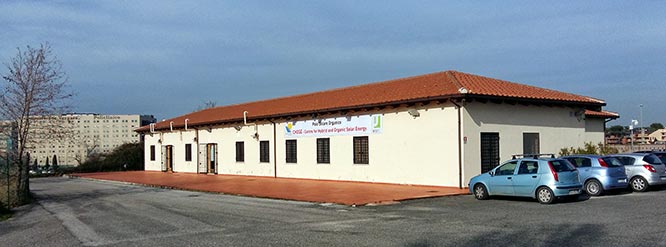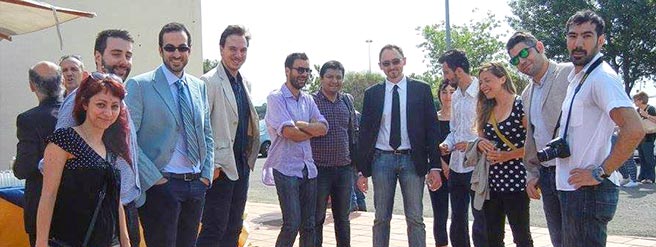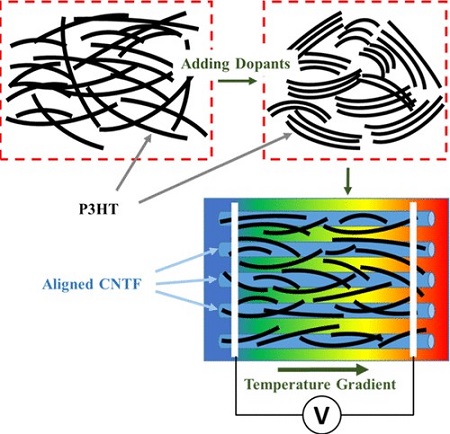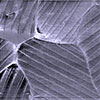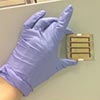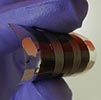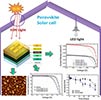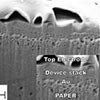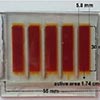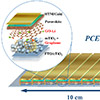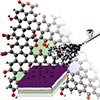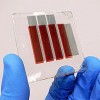CHI SIAMO
Il Polo Solare Organico della Regione Lazio (CHOSE) è nato nel 2006 dalla volontà della Regione Lazio e dell'Università degli Studi di Roma Tor Vergata di creare un centro di eccellenza nel settore del fotovoltaico di nuova generazione.
27 BITCOINPREZZO BITCOIN 22 MAGGIO 2010BITCOIN AMAZON 2019
20 February 2023
A Bio-photoelectrolytic Organic Semiconductor Platform For Measurement And Control Of Proliferation And Behaviour Of Living Cells Using Light Pulses
Organic semiconductors have been shown to be promising for interfacing with biological systems because they are biocompatible, printable and their optical properties can be tailored. A multidisciplinary international team from seven research institutes have designed a bio-photoelectrolytic platform based on semiconducting polymer thin films, onto which cells were cultured immersing both in an aqueous biological medium. The team demonstrated it is possible to inhibit cell proliferation by 50% in a cancer cell line by subjecting the platform to a series of light pulses over time. Light stimulation was found to increase the concentration of calcium ions inside the cells by three times. The platform also enabled to measure bio-electrical signals. The bio–photoelectrolytic platform and the effective use of light stimulation may open new avenues for in vitro light control/manipulation of cell behaviour, for the development of future novel non-invasive tools for application in bio-sensing, regenerative medicine and cell-based therapy, and for cancer progression control and therapy.
Results are published in Advanced NanoBiomed Research, 2200127 (2023)
https://onlinelibrary.wiley.com/doi/full/10.1002/anbr.202200127

For more information download the press release
APP BITCOIN BRASILE4392 BITCOIN EQUIVALGONOADC BITCOIN
You are invited to participate at the Online Conference on New Generation Photovoltaics for Space (PVSPACE), from 21th to 22th of June 2022.
Compared with the terrestrial environment, the cosmic space environment is very harsh. Space is characterized by ultra-high vacuum, extreme temperatures and also exposure to several high-energy charged particles and rays. In line with the fast-growing space economy, new generation of photovoltaic systems e.g., perovskite solar cells and multi-junction thin film PVs have been shown a great potential for compete with conventional PV systems in the space applications due to high efficiency in ultra-low-cost devices, low energy payback time, solution-process and roll-to-roll fabrication, high specific power and intrinsic stability against high energy particles and rays.
The scope of the conference is to gather international experts in new generation photovoltaics such as perovskite, organic PV or tandem between new generation and conventional PV, to have a fresh update on the development in the field and to define new opportunities of new generation PV in space applications. From space applications we consider not only those which are available nowadays such as satellite powering but also new space developments such as extraterrestrial bases, deployable flexible PV arrays, inflatable solar cells etc. The conference would also focus on space relevant tests of new PV technologies as well as the first experimental demonstration on the space environment.
Conference Organizer: Dr. Narges Yaghoobi Nia, Prof. Aldo Di Carlo, Prof. Luigi Schirone, Dr. Mahmoud Zendehdel
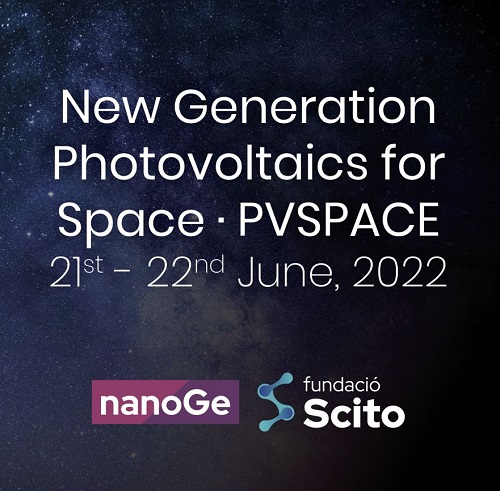

ACCETTA BITCOIN PER LA TUA ORGANIZZAZIONE NO-PROFITACQUISTARE BITCOIN CON VISTO PREPAGATOI POSTI MIGLIORI PER ACQUISTARE BITCOIN
22 January 2022
Simple and effective deposition method for solar cell perovskite films
using a sheet of paper
Perovskite semiconductor solar cells are a very exciting photovoltaic technology possessing similar efficiencies to silicon but cast or printed in thin films via liquid inks. A new method that uses a simple sheet of paper to deposit the perovskite films that does without any expensive equipment at all has been developed by a team from Tor Vergata University and University of Zanjan. The trick to achieve high performance with this remarkably cheap method is to soak the paper applicator in anti-solvent which almost doubles efficiencies compared to when using it dry, reaching 11% on flexible plastic substrates. Paper, compared to other soft applicators, possesses the right porosity and smoothness for deposition of high quality perovskite films.
Video of the method can be watched on CHOSE Youtube channel:
gateioResults are published in iScience 25, 103712 (2022)
https://www.cell.com/iscience/fulltext/S2589-0042(21)01682-5
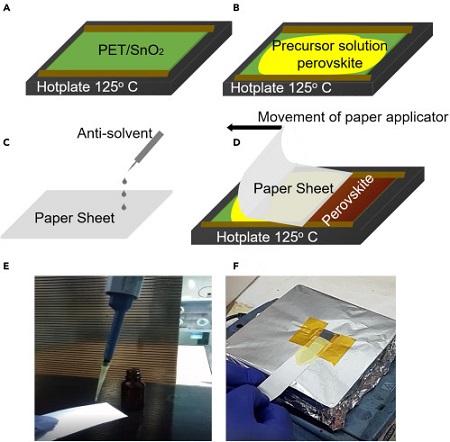
For more information download the press release
CONFIGURAZIONE BITCOIN ANTPOOLCOME APPAIONO 200 CENTO BITCOINVENDERE BITCOIN A PAYPAL
26/03/2021
A research team led by CHOSE has fabricated a perovskite solar module with a total active area of 42.8 cm2 and aperture area of 50 cm2. The panel was built with 20%-efficient perovskite cells connected in 14 series and was able to retain 90% of the initial efficiency after 800 h of thermal stress at 85° C.(https://doi.org/10.1016/j.nanoen.2020.105685)
Read the article by Emiliano Bellini on PV Magazine:
https://www.pv-magazine.com/2021/03/26/perovskite-solar-module-with-17-efficiency/
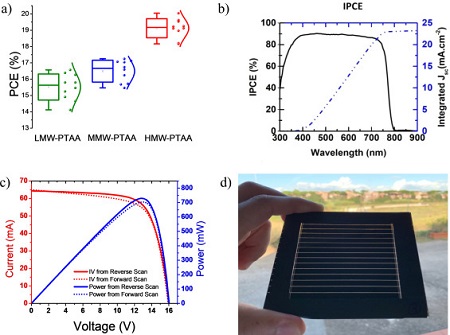
ESTRARRE BITCOIN PER I MANICHINI0,2 BITCOINANGELO OGBONNA BITCOIN
02/03/2021
New Paper out on ACS - Appl. Mater. Interfaces!
Our latest work led by our Luigi Angelo Castriotta shows outstanding results on Methylammonium Free perovskites processed in Air with scalable technique by using Infrared annealing and Potassium doped graphene oxide as an interlayer, achieving efficiencies of 18.3% and 16.10% on 0.1cm2 cell and on 16cm2 module respectively, with enhanced stability compares to the standard multi Cation reference.
Congratulations to the extraordinary work in collaboration with leading researchers worldwide!
Fabio Matteocci, Luigi Vesce, Lucio Cinà, Antonio Agresti, Sara Pescetelli, Alessandro Ronconi, Markus Löffler Minas Stylianakis, Francesco Di Giacomo, Paolo Mariani, Maurizio Stefanelli, Emily Speller, Antonio Alfano, Barbara Paci, Amanda Generosi, Fabio Di Fonzo, Annamaria Petrozza, Bernd Rellinghaus, Emmanuel Kymakis and Aldo Di Carlo
The pubblication is avalaible at the link:
https://pubs.acs.org/doi/10.1021/acsami.0c18920
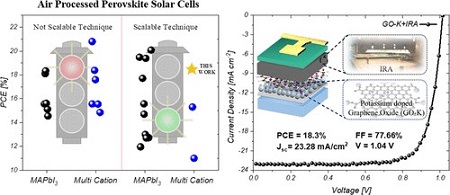
0155 BITCOIN A USD72KH S IN BITCOIN0,066 BITCOIN PER NAIRA
01/02/2021
Nuovo articolo su "Nano Energy" Journal!
I ricercatori del CHOSE in collaborazione con NUST-MISiS (Mosca), CNR-ISM, INFN-LNF, Elettra-Sincrotrone Trieste S.C.p.A., Institut Pprime (Università di Poitier), Accademia Russa delle Scienze e CNR-ISC, hanno dimostrato l'uso dei MXenes in celle solari a perovskite invertite come strategia vincente per aumentare le prestazioni del dispositivo.
I sorprendenti risultati sono visionabili su:
https://doi.org/10.1016/j.nanoen.2021.105771
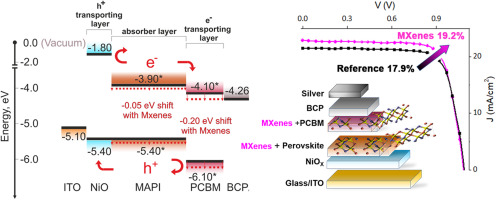
GARETH SOLOWAY BITCOIN12 7 2017 NOVITÀ BITCOINBITCOIN SENZA MUSCHIO DI ELON
I ricercatori del CHOSE Saeed Mardi e Andrea Reale, in collaborazione con Alberto Vomiero e Khabib Yasupov della LULEA Univestiy (Svezia) e Patricia M. Martinez, Anvar Zakhidov dell'Univestiy of Texas (Texas, USA) hanno pubblicato su ACS Omega i risultati della loro collaborazione sui compositi di carbonio nanotube/polimeri, che si stanno rivelando di notevole importanza nel campo delle applicazioni termoelettriche.
La pubblicazione è disponibile su:
https://pubs.acs.org/doi/10.1021/acsomega.0c02663
BITCOIN ARGENTO 20141 PREZZO DELL'ORO BITCOIN1 BITCOIN QUANTO RUPIA 2018
Nell’ambito del Progetto Europeo Graphene Flagship è stato realizzato il primo modulo fotovoltaico DSSC (Dye-Sensitized Solar Cell), basato su una griglia di contatti stampati in Graphene, grazie ai quali è stato possibile risolvere il problema della corrosione che affligge le tipiche griglie in argento dei moduli DSSC, aumentando così la stabilità strutturale di questi dispositivi..
Un importante risultato merito della collaborazione tra il C.H.O.S.E. e il "Graphene Cambridge Center" dell'Università di Cambridge (UCAM), fondato e diretto dal prof. Andrea C. Ferrari, il quale ricopre anche il ruolo di "Science and Technology Officer" oltre che di "Chair of the Management Panel of the Graphene Flagship" (una delle più grandi iniziative di ricerca finanziate dalla Commissione Europea)
La pasta di Graphene è stata formulata e prodotta con la tecnica della microfluidizzazione presso il “Graphene Cambridge Centre” dell’Università di Cambridge. La realizzazione in Graphene delle griglie del modulo fotovoltaico DSSC, ha inoltre permesso di incrementare l’efficienza calcolata su aperture area, fino al 12%. Tale risultato, unito alla maggiore stabilità dei dispostivi rispetto a quelli standard (con l’argento), spinge ulteriormente la tecnologia DSSC nel settore BIPV (Build Integrated Photo-Voltaic) e nelle applicazioni indoor.
I risultati ottenuti sono stati pubblicati in ACS Publications, disponibili al seguente link:
https://pubs.acs.org/doi/abs/10.1021/acsaem.0c01960
Congratulazioni a Paolo Mariani, Antonio Agresti, Luigi Vesce, Sara Pescetelli, Alessandro Lorenzo Palma, Flavia Tomarchio, Panagiotis Karagiannidis, Andrea C. Ferrari e Aldo Di Carlo

SEM images of (a) Ag layer, (b) graphene coating, (c) cross section of Ag layer, (d) cross section of graphene coating, (e) schematic cross view of Ag-based device, (f) schematic cross view of graphene-based device
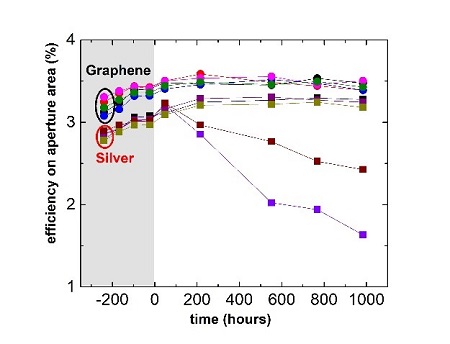
Stability test at 85 °C comparing 5 DSSC modules with Ag-vertical interconnects and 5 with graphene ones
GRAFICO CIRCOLARE BITCOIN1290BITCOINGATES IN OMAGGIO BITCOIN
Within the EU Graphene Flagship Project, through the collaboration between the C.H.O.S.E. and the "Graphene Cambridge Center" of the University of Cambridge (UCAM), founded and directed by Prof. Andrea C. Ferrari, who is also the Science and Technology Officer and the Chair of the Management Panel of the Graphene Flagship (one of the largest research initiatives ever funded by the European Commission), the first DSSC (Dye-Sensitized Solar Cell) PV (Photo-Voltaic) module, based on Graphene printed interconnects, was realized.
Thanks to these interconnects, corrosion issues that affect the typical silver grids of the DSSC modules have been fixed, thus increasing the structural stability of these devices.
Graphene paste was realized and fabricated via microfluidization at the Graphene Cambridge Center. Graphene-based interconnects of the DSSC module have also allowed to increase the Power Conversion Efficiency (PCE) calculated on Aperture Area, up to 12% with respect to silver-based ones. This result, combined with the greater stability of the devices once compared to the standard ones (made of silver), further rolls out the DSSC technology in the BIPV (Build Integrated Photo-Voltaic) sector and in indoor application.
The obtained results are published in ACS Publications, available at the following link:
https://pubs.acs.org/doi/abs/10.1021/acsaem.0c01960
Congratulations to Paolo Mariani, Antonio Agresti, Luigi Vesce, Sara Pescetelli, Alessandro Lorenzo Palma, Flavia Tomarchio, Panagiotis Karagiannidis, Andrea C. Ferrari and Aldo Di Carlo

SEM images of (a) Ag layer, (b) graphene coating, (c) cross section of Ag layer, (d) cross section of graphene coating, (e) schematic cross view of Ag-based device, (f) schematic cross view of graphene-based device

Stability test at 85 °C comparing 5 DSSC modules with Ag-vertical interconnects and 5 with graphene ones
COS'È UNA MACCHINA PER ESTRARRE BITCOINMATEMATICA DEL BITCOINAGGIUNGERE SOLDI AL MIO PORTAFOGLIO BITCOIN
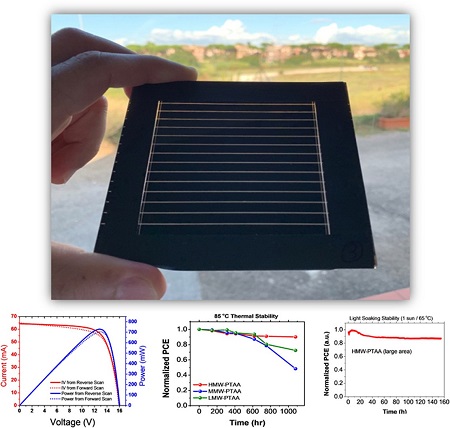
Operational stability of perovskite solar cells (PSCs) is rapidly becoming one of the pressing bottlenecks for their upscaling and integration of such promising photovoltaic technology. By using a Polaron Arrangement strategy, we demonstrated stable PSCs with typical power conversion efficiencies above 20%, retain more than 90% of the initial efficiency after 1080 hours thermal stress at 85 ˚C and 87% of initial efficiency after 160 hours exposure against 1 sun light soaking. By using this strategy, we advanced the efficiency of perovskite solar modules beyond 17% on an active area of 43 cm2, keeping above 90% of the initial efficiency after 800 hours thermal stress at 85 ˚C. These results, obtained in ambient conditions, pave the way toward the industrialization of PSC-based photovoltaic technology.
The obtained results published in Nano Energy (an Elsevier journal with IF: 16.6) available online via following link:
https://www.sciencedirect.com/science/article/abs/pii/S2211285520312581
Congratulations to Narges Yaghoobi Nia, Mahmoud Zendehdel, Mojtaba Abdi-Jalebi, Luigi Angelo Castriotta, Felix U. Kosasih, Enrico Lamanna, Mohammad Mahdi Abolhasani, Zhaoxiang Zheng, Zahra Andaji-Garmaroudi, Kamal Asadi, Giorgio Divitini, Caterina Ducati, Richard H. Friend and Aldo Di Carlo.
COME PUÒ VALERE QUALCOSA IL BITCOIN?PREVISIONI A 1 SETTIMANA PER BITCOIN5 CRIPTOVALUTE MIGLIORI DEL BITCOIN
11 December 2020
Development of a colour-sensitive inkjet-printed pixelated artificial retina model and its study via an optoelectronic device
Around 300 million people worldwide are visually impaired. In recent years, photosensitive organic electronic materials have been shown to be a very promising tool for transducing light stimuli to non-functioning retinas. An international interdisciplinary team from four institutes developed a colour-sensitive artificial retina model using polymer semiconductors. These are processable as inks which enabled pixelatation by depositing each polymer dot by inkjet-printing. Three types of polymer semiconductors, with spectral absorbance curves emulating those of rods, and of cones which provide colour sensitivity, were deposited in a concentric layout simplifying the anatomical human retinal scheme. The team verified that the phototransduction process from the artificial retina to a biological electrolyte solution imitating extracellular fluids found in our tissues produced electrical signals compatible with those found in retinas through a novel closed sandwich-type optoelectronic device. Biocompatibility of the materials was also verified. The bio-hybrid device is compact, easy-to-handle, transportable, with controllable size and requires a small amount of bio-electrolyte thus permitting use of tools typically found in an electronic-engineering/physics/chemistry laboratory. The density of the artificial photoreceptors was ∼11000 pixels/cm2 and the corresponding spatial resolution was 267 dpi (dots per inch), with pixel diameters of 95 micrometres comparable to that of a human hair.
Results are published in “Colour‑sensitive conjugated polymer inkjet‑printed pixelated artificial retina model studied via a bio‑hybrid photovoltaic device” article in Scientific Reports at https://rdcu.be/cbQ6g



For more information see the press release and
I BITCOIN VALGONO QUALCOSAPAGAMENTO IN BITCOINCARTA DI DEBITO BITCOIN ANONIMA GHANA

A Special Issue on "ADVANCED HYBRID AND COMPOSITE CRYSTALS FOR SOLAR FUELS"
Various technologies based on photochemical, photobiological, thermochemical, photoelectrochemical, and photovoltaic-electrochemical integration have been utilized for solar fuel production. However, there are numerous scientific challenges to developing these technologies, including finding suitable materials and hybrid/composite structures to improve light absorption, developing more efficient and stable catalysts and thin films, enhancing selectivity, minimizing interfacial losses, and resisting degradation. Accordingly, the utilization of some advanced organic/inorganic hybrid and composite crystalline compounds and relative thin films such as 2D/3D structures, plasmonic core-shell, carbon-based nanostructures, porous nanostructures, molecular catalysts, metal-organic and zeolitic imidazolate frameworks, polyoxometalates, hybrid conjugated polymers, and hybrid biomimetics can markedly improve the performance of solar fuel technologies toward industrialization.
Special Issue Editors:
Narges Yaghoobi Nia, Aldo Di Carlo, Adelio Mendes, Mahmoud Zendehdel, Hong Zhang, Gabriele Centi, Francesco Aquilante
Available at the link:
https://www.mdpi.com/journal/crystals/special_issues/solar_fuel
Deadline for manuscript submissions: 15 May 2021.
ACQUISTO BANCOMAT BITCOINCOMMERCIANTI DI BITCOIN0.00313194 BITCOIN IN NAIRA

9 July 2020
Want to know more about Perovskites and 2 D materials?
On "IOPscience" the latest review by Aldo Di Carlo, Antonio Agresti, Francesca Brunetti and Sara Pescetelli entitled "Two-dimensional materials in perovskite solar cells":
CRIPTOVALUTA BITCOINQUANTO È DIFFICILE ESTRARRE BITCOINCORRELAZIONE BITCOIN CON S&P 500
29 April 2020
Celle Fotovoltaiche Flessibili su Vetro Ultra-Sottile
ad Alta Efficienza per Interni
È già in atto una rivoluzione che include lo sviluppo di sensori wireless autonomi, elettronica a basso consumo energetico per il mercato dei consumatori, case intelligenti, domotica e Internet delle Cose. Tutti questi elementi richiedono, per la loro alimentazione, dispositivi di raccolta di energia efficienti e facili da integrare. Le fonti di energia fotovoltaica per uso interno, su substrati flessibili e pieghevoli ultrasottili, avranno il potenziale per facilitare queste innovazioni tecnologiche ma devono essere sviluppate per fornire prestazioni sotto l'illuminazione artificiale interna piuttosto che sotto il sole. Un team internazionale costituito da ricercatori dell’Università degli Studi di Roma Tor Vergata, Universidad Surcolombiana e il Fraunhofer Institute ha appena pubblicato un articolo in Cell Reports Physical Science, che evidenzia nel loro progetto i progressi compiuti nel raggiungimento di efficienze sopra il 20% con celle solari a perovskite sotto queste condizioni di illuminazione di interni usando substrati flessibili di vetro ultrasottile. Le efficienze ottenute rappresentano le più elevate riportate per qualsiasi tecnologia di celle fotovoltaiche flessibili e pieghevoli per interni, oltre a superare del 60-90% le precedenti celle di perovskite su substrati flessibili. Le potenze specifiche in Watt erogate per grammo di peso (W/g) sono superiori del 40-55% rispetto alla loro controparte su film plastici in PET, e sono di un ordine di grandezza superiore a quelle su vetro rigido. I risultati sono riportati al seguente link: “Perovskite Photovoltaics on Roll-To-Roll Coated Ultra-thin Glass as Flexible High-Efficiency Indoor Power-Generators” https://doi.org/10.1016/j.xcrp.2020.100045.
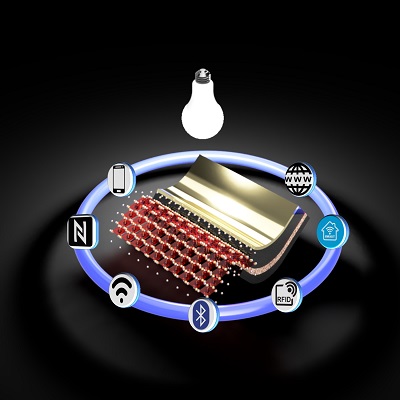
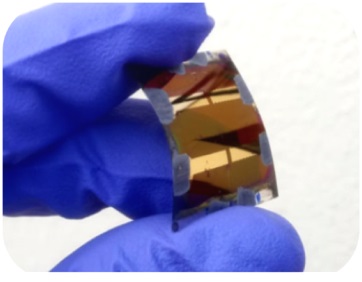
Per maggiori informazioni vedi il comunicato stampa e il link
https://doi.org/10.1016/j.xcrp.2020.100045
L'ACCOUNT HA INIZIATO A DISCUTERE DI BITCOINSTABLECOIN SUPPORTATA DA BITCOINALEJANDRA GUAJARDO BITCOIN
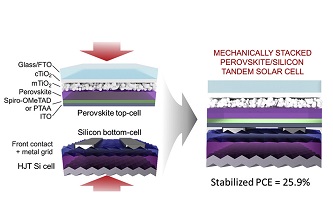
I ricercatori del CHOSE dell'Università di Roma Tor Vergata, l'Istituto Italiano di Tecnologia (IIT), con Graphene Labs e il suo spin-off BeDimensional, in collaborazione con i ricercatori dell'ENEA del Laboratorio di Tecnologie Fotovoltaiche, hanno realizzato un’innovativa cella solare “tandem”, in perovskite e silicio, raggiungendo efficienze record fino al 26,3%.
I risultati di questa importante ricerca sono stati pubblicati il 17 febbraio 2020 sulla rivista internazionale “Joule”:
1 PREZZO BITCOIN NEL TEMPOCASINÒ DI ROULETTE BITCOIN1 BITCOIN IN DOLLARI AMERICANI AL MASSIMO
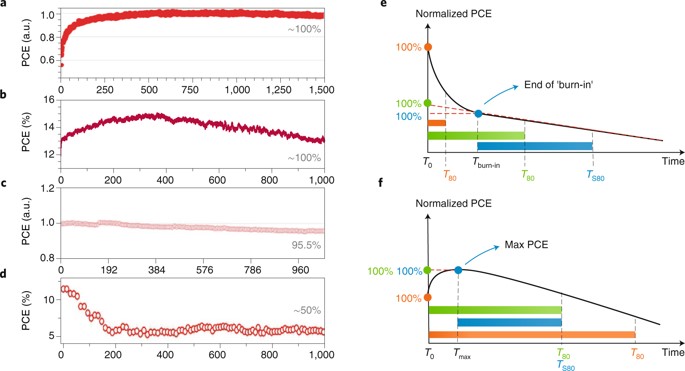
Un altro passo avanti verso l’industrializzazione del fotovoltaico a perovskite, la nuova tecnologia ora al centro della ricerca sull’energia solare.
Con il prof. Aldo Di Carlo, la prof.ssa Francesca Brunetti e la dr.ssa Francesca De Rossi anche il CHOSE in un team di scienziati, che ha espresso una Dichiarazione di Consenso per la definizione delle procedure finalizzate alla valutazione e misurazione della stabilità del fotovoltaico a perovskite.
La Dichiarazione di Consenso è stata pubblicata sulla prestigiosa rivista “Nature Energy” (VOL 5 | January 2020) al link:
La rivista “Nature Energy” ha inoltre dedicato all’argomento l’articolo “Perovskites take steps to industrialization” (22/01/2020), che si può leggere al link:
BITCOIN 5G E UN GRANDE FUTUROANARCHAST PARLA CON GLI SVILUPPATORI PRINCIPALI DI BITCOIN200 AUD PER BITCOIN
Dal 23 al 25 Settembre 2019, a Limassol (Cipro), si è tenuta la 17° Conferenza Europea sulla Termoelettrica.
Per il CHOSE il prof. Andrea Reale e il dr. Saeed Mardi hanno presentato le attività e i risultati della ricerca nel settore dei dispositivi termoelettrici stampabili.
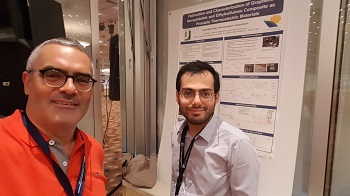
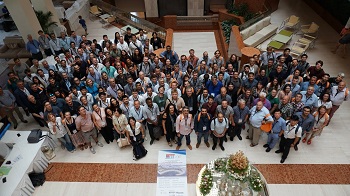
(8/10/2019)
COME SI GENERANO BITCOIN
The 19th edition of the International School on Hybrid and Organic Photovoltaics (ISOPHOS®) will be held from the 2nd till 6th of September 2019 in the wonderful atmosphere of Castiglione della Pescaia (Italy)
CI SONO LEZIONI SU BITCOIN VICINO A ME
CHOSE e discoverplaces.travel insieme per far scoprire le bellezze dei nostri territori.
MASTER MIF
CHOSE organizza in collaborazione con l'Università degli Studi di Roma Tor Vergata e l'associazione FREEnergy un Master di II livello in "Ingegneria del Fotovoltaico" .
IMPORTANCE OF FERROELECTRIC DOMAINS
On the importance of ferroelectric domains for the performance of perovskite solar cells
The effect of ferroelectric polarization patterns in MAPbI3 on JV characteristics has been analyzed. We discuss models for the polarization orientation pattern and magnitude of the ferroelectric domains. Simulations performed on real patterns show that the presence of ordered ferroelectric domains, even with a weak characteristic polarization magnitude enhances the power conversion efficiencies and are mandatory to reproduce the experimental J-V characteristics.
CRYSTAL ENGINEERING APPROACH
A Crystal Engineering approach for perovskite solar cells and modules fabrication out of the glove box
we fabricated high efficiency perovskite solar cells (PSC) and perovskite solar modules (PSM) utilizing several Hole Transport Layers (HTLs). The results show that the Crystal Engineering approach remarkably improved the device performance reaching a power conversion efficiency of 17%, 16.8% and 7% for spiro-OMeTAD, P3HT and HTL free, respectively.
FULLY-SPRAYED FLEXIBLE
Fully-sprayed flexible polymer solar cells with a cellulose-graphene electrode
Light, flexible and low-cost organic solar cells made entirely by spray and with an innovative cellulose and graphene-based electrode! The work, in collaboration with the Smart Materials group of the ISTITUTO ITALIANO DI TECNOLOGIA has been published on the important magazine "Materials Today Energy".
UNDER INDOOR ILLUMINATION
Highly efficient perovskite solar cells for light harvesting under indoor illumination via solution processed sno2/mgo composite electron transport layers
A new architectures in CH3NH3PbI3 based planar perovskite solar cells incorporating solution processed SnO2/MgO composite electron transport layers that show the highest power outputs ever reported under typical 200–400 lx indoor illumination conditions.
SOLAR CELLS ON PAPER
Perovskite solar cells on paper and the role of substrates and electrodes on performance
The first perovskite solar cell (PSC) fabricated directly on a paper substrate with a maximum power conversion efficiency of 2.7% is here reported.
APOCAROTENOIDS PIGMENTS
Photoelectrochemical and spectrophotometric studies on dye-sensitized solar cells (dscs) and stable modules (dscms) based on natural apocarotenoids pigments
We present a study on dye-sensitized solar cells (DSCs) and we fabricate dye-sensitized solar modules (DSCMs) based on natural apocarotenoids extracted from the achiote's seeds (annatto). Use of less polar solvent such as diethyl ether improves the bixin concentration in the annatto extract which, was employed as sensitizer in the devices.
PEROVSKITE SOLAR MODULES
Fully laser processed Perovskite Solar Cell modules with 95% Aperture Ratio
Laser patterning has been applied to realize Perovskite solar modules with a ratio between active and total substrate area of 95% and an efficiency of 9.3%. These values are new records for large area (14.5 cm2) fully laser processed perovskite devices. This work signs a forward step to the industrialization of perovskite based solar technology. Results have been published on IEEE Journal of Photovoltaics DOI: 10.1109/JPHOTOV.2017.2732223
BITCOIN ETF COS'È
Graphene-Perovskite Solar module with efficiency 12.6% on 50 cm2
Graphene interface engineering (GIE) is proposed as an effective way to boost efficiency in Perovskite solar cells and modules.
A record efficiency of 12.6% on 50 cm2 module active area has been achieved by introduce Graphene in the mesoporous TiO2
and lithium neutralized graphene oxide (GO-Li) at the mTiO2/perovskite.
Results have been published on ACS Energy Lett. 2017, 2, 279−287
REDUCED GRAPHENE OXIDE
Reduced Graphene Oxide as Efficient and Stable Hole Transporting Material in Mesoscopic Perovskite Solar Cells
Nano Energy
DOI: 10.1016/j.nanoen.2016.02.027
PEROVSKITE MODULE
We fabricated the first perovskite-based monolithic series-type module showing very promising results in terms of the power conversion efficiency, the reproducibility of the fabrication process and long-term stability.
PEROVSKITE SOLAR CELLS
We fabricated perovskite based solar cells using CH3NH3PbI3-xClx with different hole transporting materials such as Spiro-OMeTAD and P3HT.
SDSC MODULE
We fabricated the first solid state dye solar cell (SDSC) module using poly(3-hexilthiophene) (P3HT) as Hole Transport Material for the dye regeneration process.
A COATING FOR ALL
Fully sprayed polymer solar cell modules open the way to bring Photovoltaics nominally everywhere, thanks to spray coating conformability to virtually any kind of substrate.
00000337 BITCOIN IN DOLLARI
We have demonstrated the feasibility of the fabrication of a photovoltaic greenhouse roof by using techniques based on solution processing (spray coating and screen printing).
